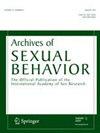摘要
越来越多的研究表明,男性可能有内化的性倾向,比如自恋性癖(对自己是女性的想法或形象的性吸引力),这导致了变性身份的发展。在这里,我提供了证据,证明女性可能有类似的内化性行为,如自男癖(对自己作为男性的思想或形象的性吸引力),这同样会导致跨性别认同的发展。这里提出的女性自体男性恋的案例使用了直接和间接的证据线。女性的自男癖直接体现在跨性别的性冲动上,比如穿着男性服装或把自己想象成男性时的性唤起。在描述女性对男性或男性化的性兴趣的第一手叙述中,可以找到跨性别性行为的定性证据。在异性恋流行调查中发现了跨性别性行为的定量证据,该调查可靠地发现一些女性支持跨性别性行为的措施。在更广泛的观察中发现了女性自体雌雄恋的间接证据,一些女性报告了罕见形式的跨性别认同(例如,动物认同)和与内化性行为一致的性行为(例如,成为动物的性幻想),并且跨性别认同在她们中出现的比例较高。对于这些不同的观察结果,一个简单而直接的解释是,女性可能有内化的性行为,比如自男癖,从而导致相应形式的跨性别认同。女性的自男恋和男性的自女恋似乎是内化异性恋的类似形式——一种可以被统称为自异性恋的性行为(以异性吸引自己)。A growing body of research suggests that males can have internalized sexualities such as autogynephilia (sexual attraction to the thought or image of oneself as female) which lead to the development of trans identity. Here I present evidence that females can have analogous internalized sexualities such as autoandrophilia (sexual attraction to the thought or image of oneself as male) which similarly lead to the development of trans identity. The case for female autoandrophilia presented here uses both direct and indirect lines of evidence. Female autoandrophilia is directly evidenced by cross-gender eroticism such as sexual arousal from dressing as male or imagining oneself as male. Qualitative evidence of cross-gender eroticism is found in firsthand narratives which depict female sexual interest in being male or masculine. Quantitative evidence of cross-gender eroticism is found in paraphilia prevalence surveys which reliably find that some females endorse measures of cross-gender eroticism. Indirect evidence for female autoandrophilia is found in the broader observation that some females report rarer forms of trans identity (e.g., animal identity) and eroticism consistent with internalized sexuality (e.g., sexual fantasies of being an animal), and that transgender identity arises among them at elevated rates. A simple, straightforward explanation for these various observations is that females can have internalized sexualities such as autoandrophilia which lead to corresponding forms of trans identity. Female autoandrophilia and male autogynephilia appear to be analogous forms of internalized heterosexuality—a type of sexuality which can collectively be described as autoheterosexuality (attraction to oneself as the other sex).

 求助内容:
求助内容: 应助结果提醒方式:
应助结果提醒方式:


